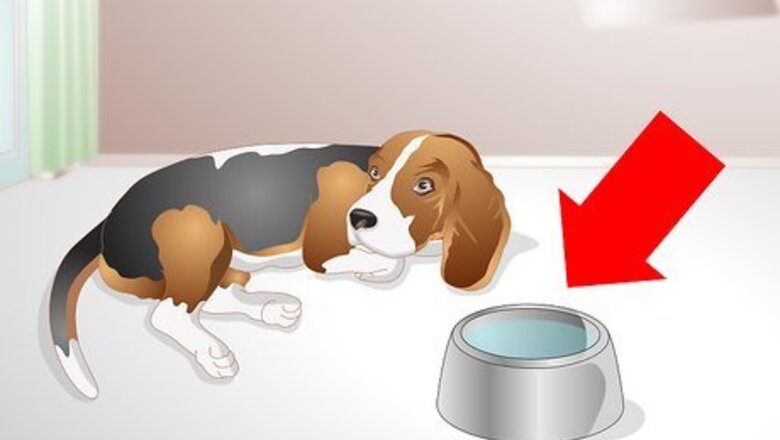
views
Assessing Your Dog's Water Intake
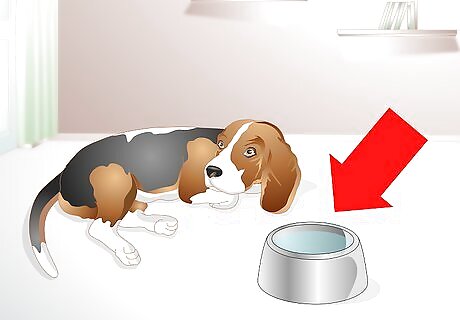
Watch for changes in water consumption when your dog is sick. When a dog is sick its behaviors can change drastically. Pay attention to your dog's eating and drinking routines, looking for large changes. You want to catch dehydration early, before it causes an additional medical problem for your dog.
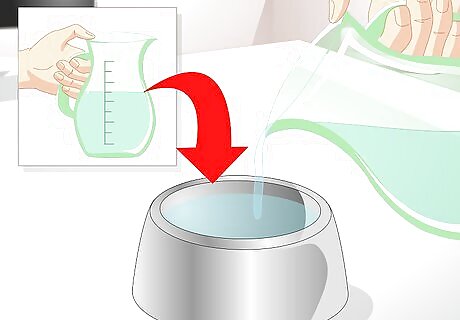
Measure how much your dog is drinking. Give your dog a specific amount of water and see how fast it drinks it. While there may be variation, for the most part each dog requires from 44-66 mL of water per kg of body weight. That is ½ to 1 ½ ounces of water per pound of body weight. In other words, a 10 pound dog should drink roughly a cup of water a day or a large 60 pound dog should drink 2 quarts of water a day.
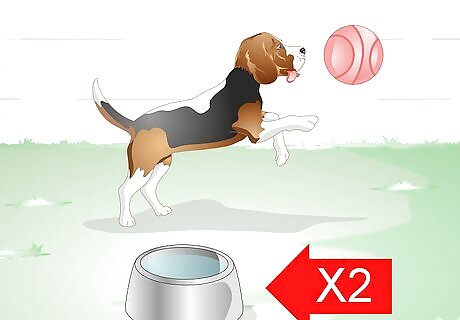
Take variable factors into consideration. You will need to take into account a few things when estimating your dog's water needs. In hot and humid weather a dog will need to drink more water. In addition, if your dog is exercising heavily it will need more water. When a dog pants to cool off it loses more water than if it is at home relaxing on your couch. Dogs in these conditions may need twice the amount of water as normal.
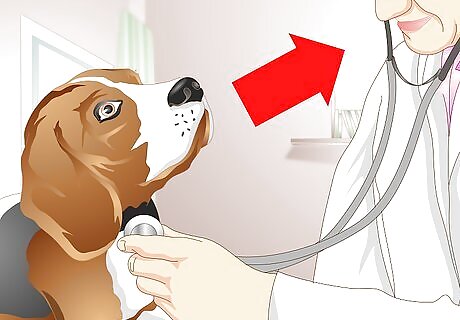
Work with your veterinarian to get your dog's disease condition under control. Sometimes treating the disease adequately will make your dog feel better and have a healthier appetite for both food and water. In these cases the dehydration will usually clear up on its own. Be aware that some medications used to treat congestive heart failure, like diuretics, will make monitoring water intake on your dog very important. Diuretics can cause severe dehydration. EXPERT TIP Colleen Demling-Riley, CPDT-KA, CBCC-KA, CDBC Colleen Demling-Riley, CPDT-KA, CBCC-KA, CDBC Canine Behavior Consultant Colleen Demling-Riley (CPDT-KA, CBCC-KA, CDBC) is a Canine Behavior Consultant and the Founder of Pawtopia Dog Training. With more than 20 years of experience, she specializes in creating and customizing dog management programs for dog owners. She is a Certified Pet Dog Trainer-Knowledge Assessed, Certified Behavior Consultant Canine-Knowledge Assessed, Certified Dog Behavior Consultant, and American Kennel Club Canine Good Citizen Evaluator. Colleen is a member of the International Association of Canine Professionals and has been a featured expert in national media including the New York Times, Woman’s Day, Readers Digest, Cosmopolitan, and Yahoo.com. Colleen Demling-Riley, CPDT-KA, CBCC-KA, CDBC Colleen Demling-Riley, CPDT-KA, CBCC-KA, CDBC Canine Behavior Consultant Call the vet for guidance if your dog is in pain. While you wait, create a quiet, comfy space for them to rest. Choose a less busy area of the house, like a crate or bed in the corner of the family room. Don't hesitate to call your vet immediately to find out what you should do.
Increasing Your Dog's Water Intake

Encourage your dog to drink. Try to lure it nicely to its bowl. If you have a dog that is sick there is chance that it won't be interested much in eating or drinking. For some illnesses, such as simple gastrointestinal upset in a normally healthy dog, this isn't too worrisome. As long as your dog doesn't go on much longer than a day without drinking water it should be ok. If your dog is refusing water after a day you need to consult with your veterinarian for a diagnosis as to what is causing the problem.
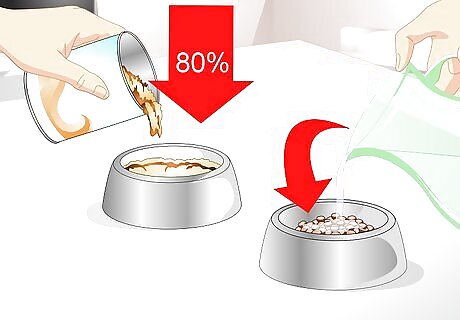
Add moisture to your dog's meals. For example, switch to feeding a wet or canned version of the food your dog is currently eating. Canned food is approximately 70-80% water, while dry food is generally around 10% water. You can also add a low-sodium meat broth to dry dog food or make a 50-50 mix with water.

Make water more attractive to the dog. Try freezing low-sodium meat broth into ice cubes using a 50-50 mix with water. Some dogs enjoy eating plain ice cubes as well. Use bottled water instead of tap. Sometimes the chemicals used to treat tap water are disagreeable to dogs. Clean your dog's water bowl with soap and water and rinse well. Refresh the water two or three times a day by pouring out the old water and replacing it with fresh water.

Give unlimited access to water. Pet fountains are an attractive option for many dogs. These “bubblers” or “streamers” can keep the water aerated and from becoming flat. Leaving the bathtub faucet dripping. This achieves the same result as a pet fountain, although it is a bit wasteful. Place bowls of water in a few places around the house especially if your dog tires easily or finds it hard to move.
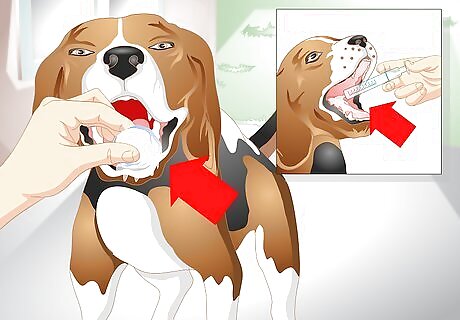
Bring water directly to your dog's mouth. Using a clean cloth moistened in water, place the moist towel in the edge of your dog's mouth. Wiping along the dog's gums or tongue can encourage your dog to drink. Use a syringe to give your dog water. Shoot water gently into your dog's mouth and it will be forced to swallow at least a little of it.
















Comments
0 comment